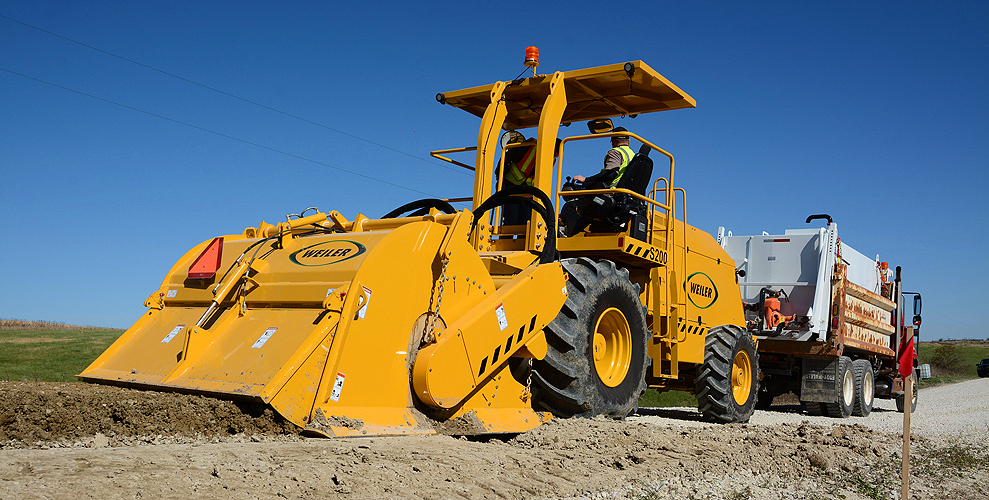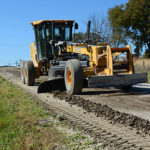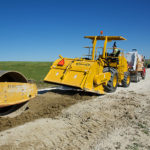The winter and spring thaw from the 2018-19 winter made rural road conditions throughout the Midwest terrible. In Iowa, from border to border, gravel roads and the spring thaw combined for a muddy, rutted mess that also raised concerns for vehicle safety and drivability for school busses and large vehicles.

County engineers tested the Base One program on rural Clarke County roads to determine the best formulation for future applications.}
After months of research on rural road stabilization programs, the County Engineers and County Supervisors have taken action on and implemented a program called Base One. The Base One program has shown great success in other areas of the country in stabilizing gravel roads, reducing surface moisture as well as material runoff from rain, snow and winter ice freeze-thaw cycles.
“With departments in Iowa, Minnesota and the Dakotas seeing success with [the Base One Program],” said County Engineer, Christian Boehmer. “We’re confident it can stand up to the freeze-thaw cycles around here.”
Boehmer and crews are testing sections of rural road in Clarke County since equipment was delivered. This testing will help in creating the ideal Base One solution-to-gravel combination for application to area roads. Using a direct injection method, a combination of gravel and Base One solution is mixed within the soil stabilizer. It’s then applied to the road surface in long, tilled sections followed by a roller and bladed to fine tune the crown and direct runoff.
Once testing was complete and the best gravel-solution combination and application process had been established, the county road crew began application this month. The heaviest traveled county roads will be addressed first and as areas are completed, other roads will be added to the program.
The new road stabilizer and solution comes with some expense, but the County Engineer was quick to point out the investment in the Base One Program will be offset by reducing the amount of maintenance and annual rock needed on these Base One road segments.
This program will reduce the need to add or replace gravel to area roads multiple times each season. That should impact material and maintenance costs for the whole county. Once the solution has been applied, maintenance and rock costs for those sections of road will be reduced.
Subsequent years should see even more savings as the solution only needs applied once every decade. Standard road maintenance and grading will continue throughout the program, but expectations are even more optimistic that road degradation will slow after the initial application and maintaining the roads the community depends on will become easier and more efficient in the years to come.



